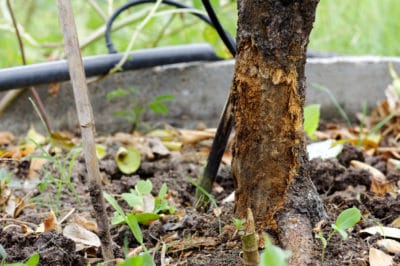Stopping Disease before It Starts
Diseases will be few and far between, as long as you provide your tree with:
- Well draining soil or potting mix. Soggy soil invites root disease.
- Eight or more hours of daily sun. This usually isn’t a problem where lemon trees grow outdoors in USDA plant hardiness zones 9 through 11. Put indoor trees in colder areas near a large south-facing windows.
- Frost protection and shelter from hot, drying winds. Keep an indoor tree away from cold drafts and heating vents.
- Regular watering a first-year tree two to three times weekly. Water an established one deeply and slowly once a week unless it rains. Water an indoor lemon when the potting mix feels very dry.
- Regular applications of citrus fertilizer and trace minerals, starting when a young tree puts out its first new leaves.
Major Lemon Tree Diseases
Three of the four diseases most threatening to lemon trees are easily managed, but the fourth is deadly.
Tristeza
Sap-sucking aphids transmit the tristeza fungus to lemon trees as they feed. Tristeza symptoms include:
- Stunted growth
- Declining fruit production
- Yellowing leaves
Untreated trees often succumb to root rot. Check you trees daily for aphid colonies feeding on the leaves and new shoots. Saturate it with organic insecticidal soap at the first sign of an aphid infestation.
Foot Rot
Branches dying back, bark peeling at the soil line and black gum oozing from the lower trunk indicate a foot rot infection. Soggy roots are the culprits; well draining soil is the solution. Keeping mulch away from the trunk also helps.
Citrus Canker
Windy weather and unsanitary tools spread citrus canker. It surfaces as corky, yellow-margined spots on the new leaves and twigs. A severely infected lemon tree may temporarily defoliate. To prevent infection, apply organic copper fungicide spray with each flush of new growth.
Citrus Greening
Aphid-related citrus psyllids transmit this incurable condition. Deformed fruit, branch dieback and yellow-mottled leaves follow. An infected lemon tree serves as a reservoir of the greening bacteria. It must be completely removed, bagged and destroyed — including the entire root system.
